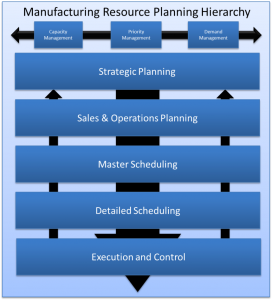— November 2, 2017

qimono / Pixabay
If the mere thought of overhauling your marketing strategy gives you anxiety, I get it. It’s time-consuming. There’s a lot of hard work involved. And, of course, there’s always the risk that the new strategy will sink your business, decimate the lives of everyone you love and reduce all of your hopes and dreams to ashes.
Alright, changing marketing strategies isn’t that scary, but it sure can be daunting. And while it might be tempting to avoid the trouble altogether and stay the course, sometimes a change is necessary.
If your business is due for a change, take a deep breath. I’m here to help. (And before we go too far, let’s make something clear: I’m a marketing guy, not an organizational development expert. I’ll be simplifying some complex ideas and providing recommendations that are appropriate for small businesses. If you’re a multinational corporation planning a major strategic change, my recommendation is actually much simpler: go hire a consultant.)
Now then. To ensure your new strategy is best positioned for success, I’ve outlined four important considerations below. But first…
How to Know When to Change Strategies
The question of when and how often a business should update their marketing strategy is related to a whole variety of forces – the industry, target buyers, market trends, sales cycle and other specific needs a business may have. That’s why you need to create a structure to plan, track and reassess your strategy, tweaking and potentially overhauling as warranted.
For many companies, that system looks more or less like this:
- Build a detailed strategy designed to achieve your business goals
- Monitor your results. Quarterly reviews are an excellent opportunity to review your goals, tactics and the outcome of your efforts to make sure you’re on track to hit your milestones
- Think small. Monthly reviews are a great way to keep individual channels on track
Reviewing your efforts on a monthly and quarterly basis will help you determine if a strategy shift is in the cards.
Keep in mind that changing the direction of your marketing strategy is not a decision to make lightly. After all, careful planning alone takes a lot of time, not to mention the hours and costs spent on implementation and potential lost revenue as you work to establish a footing in new areas. More importantly, when the change is significant, the effects will ripple through your entire business. If that ripple in turn throws your whole company out of balance, it can be difficult to right the ship – especially if you lose good people in the process.
Which brings us to…
Your Team
If you’ve been thoughtful and intentional with your hiring practices, your team is likely your greatest asset, and everyone is clear on their roles and responsibilities. But what happens when you shift your marketing strategy?
For example, let’s say you decide to move away from outbound sales and focus on inbound marketing. What is the plan for your outbound sales team? Will they still be clear on what is expected of them, and will they still have the skills, desire and capacity to do the work?
It’s worth considering how your new strategy will affect the daily responsibilities of your people and the chain of command. Coordinate with HR to figure out what communication needs to happen for a seamless transition.
Your Work
Your work is your company’s output: the services, products, profit, revenue, change or impact you’re making in the community – on a business level and on the team and employee levels.
Unless the plan is purely to cut costs in preparation of a merger or acquisition, a change in strategy is typically developed for the very purpose of improving a business’s output. That said, even if that’s the motive, it’s important to consider what impact the new strategy will have on all levels of the work being performed.
Your Systems and Structure
Perhaps you have a small team of resourceful collaborators, or maybe you have a large, distributed workforce with rigid duties and outsourced talent all over the country. Either way, your business is built on systems, structures and processes that keep your business running efficiently.
A significant strategy change warrants a full review of these systems and structures. With the new direction, do they still provide the organization, guidance and capacity your need in order to see your plan through? What rules, policies, structures or processes will need to evolve?
Your Culture
If you enjoy a strong company culture, this is a big one. Along with the tangible elements you can control and map out – like your culture code, mission statement and values – there are the unspoken ideals, personalities, attitudes and goals that motivate your team to perform and which guide your hiring and firing.
Will a new strategy align with the culture? Will it help it? Strain it? Consider interviewing a few employees who exemplify your culture to see how they feel about the change.
Considering the Interrelation Between These Factors
One last thing to keep in mind is that a change in any one of these four aspects business affects everything it’s connected to. Your business is in balance because each aspect is in sync (i.e. your structure is aligned with your culture, which is aligned with your team, which supports your work – and so on).
There’s plenty here to think about, and while I may not have made the prospect of changing marketing strategies feel less daunting, I hope this framework provides some assurance that you’re avoiding any major missteps if and when you decide it’s time for a change.
Business & Finance Articles on Business 2 Community
(77)
Report Post






